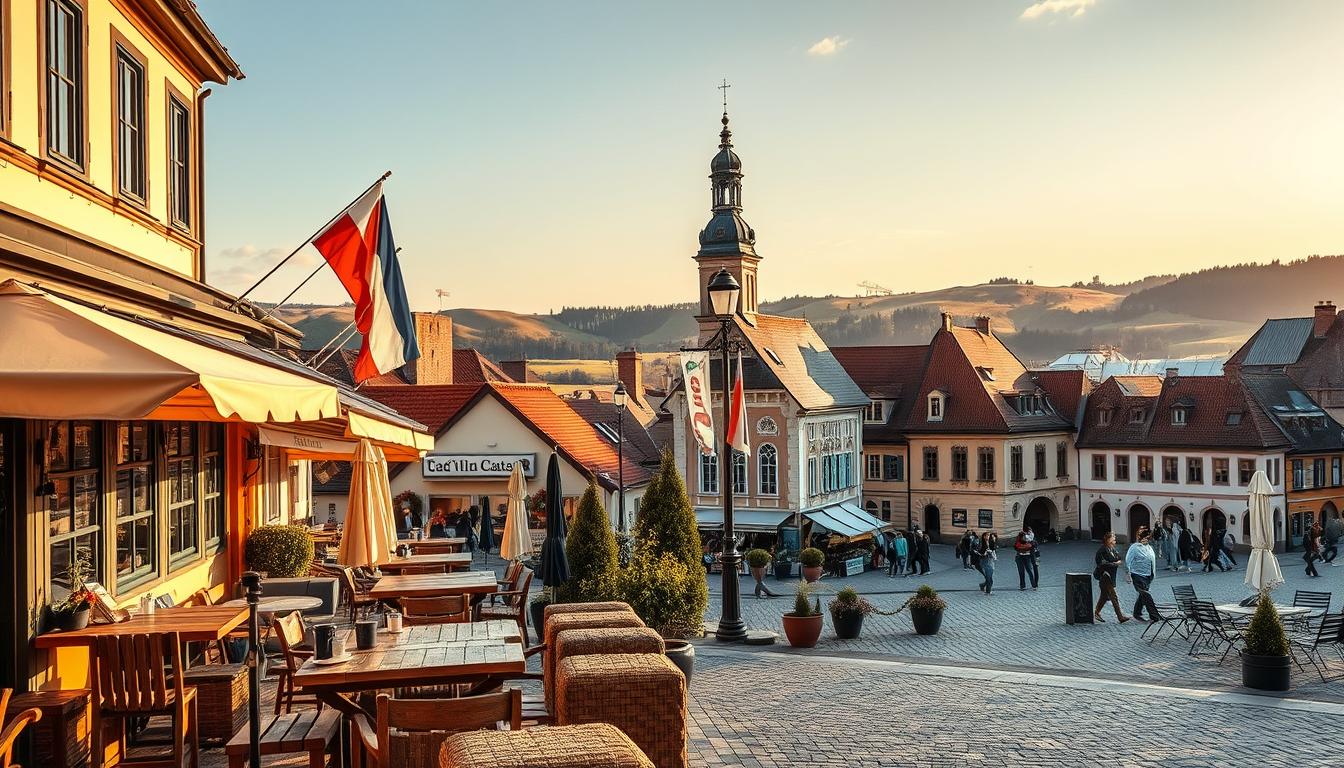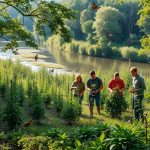In Poland, partnerships between local restaurants and attractions are key to better tourism. They bring people together and help local businesses grow. This article will show how these partnerships make visits special and help the economy.
We’ll look at what makes these partnerships work well. We aim to build a strong local tourism scene. This will help everyone involved.
Introduction to Partnerships in Poland
Partnerships in Poland are becoming more popular in the local tourism scene. The country’s hospitality sector is growing fast. Local businesses are seeing the benefits of working together.
Statistics from the Polish Tourism Organisation show a steady increase in international visitors. This growth highlights the need for businesses to collaborate. By doing so, they can offer a better experience for tourists.
Joining forces allows businesses to use each other’s strengths. This creates a more complete experience for visitors. It also helps local businesses grow and become more visible in the competitive tourism market.
Benefits of Collaborating with Local Businesses
Working with local businesses brings many benefits. It improves both customer experience and the local economy. Together, we can offer unique experiences for visitors and locals.
By teaming up with local eateries and attractions, we create special packages. These meet the varied needs of our guests.
Enhancing Customer Experience
Partnerships help us offer personalised services and exclusive deals. For instance, guests get special discounts at restaurants after visiting cultural spots or events. This makes their outings more enjoyable and adds value.
It also strengthens community ties. Happy customers are more likely to come back and tell others about us. This brings in new visitors.
Boosting Local Economy
Our collaboration boosts the local economy. More people visiting partner businesses means more money for them. This leads to more jobs and a stronger local workforce.
As businesses grow, they invest back into the community. This improves our region’s economic health. Our joint efforts make a real difference.
Understanding the Polish Hospitality Sector
The Polish hospitality sector is a mix of old and new, with many dining options. You can find traditional taverns with hearty pierogi or modern bistros with creative dishes. This variety attracts many people looking for real experiences.
Places like Kraków and Warsaw are key in this scene. They are not just food hubs but also places of culture and fun. By working with local restaurants and attractions, we can offer visitors a full experience.
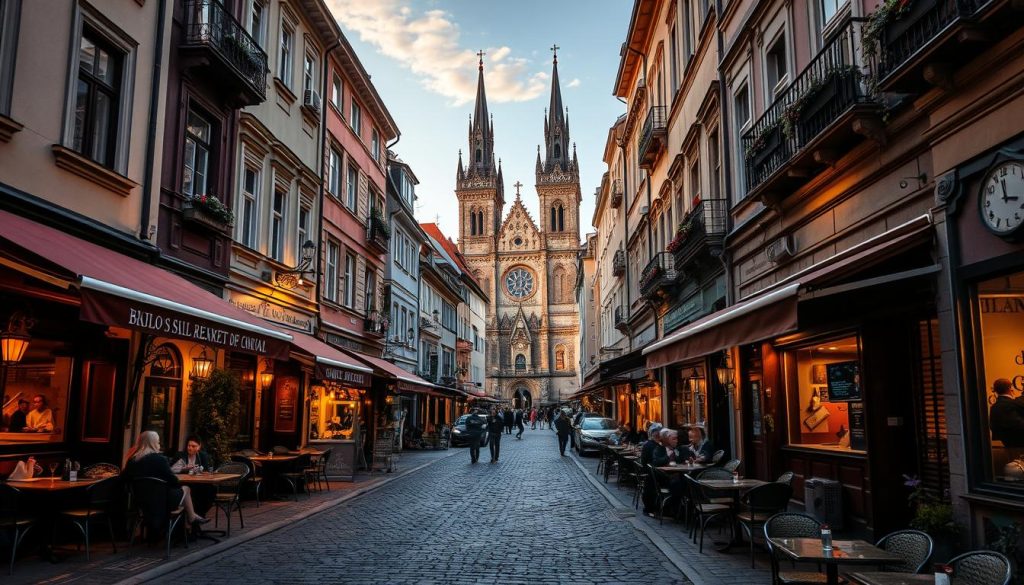
Identifying Potentail Restaurant and Attraction Partners
To find good partners, we need to look at local places first. We must do thorough research to see who fits our goals. This step is key to making partnerships work well.
Researching Local Establishments
Meeting local places means visiting them and trying what they offer. This helps us see how they feel, their service, and how they connect with people. We should also look at online reviews to learn about their reputation and who they attract. Our research should cover:
- Understanding who each place aims to attract.
- Finding out what makes them special compared to others.
- Seeing if they already work with others.
Evaluating Business Synergies
Good partnerships are when both sides benefit. By looking at how businesses can work together, we find ways to improve the experience for everyone. Think about:
- Shared customers who can help both places get more visitors.
- Joint promotions or deals that appeal to more people.
- Working together on marketing to use each other’s strengths.
By carefully researching and evaluating, we can build strong relationships. These relationships help us grow and improve our place in the local market.
How to Approach Local Restaurants and Attractions
When reaching out to local businesses, planning is key. It’s important to show how both sides can benefit. Our strategies help us connect with partners, opening doors to new opportunities.
Creating a Value Proposition
A good value proposition is the heart of any partnership. It’s about clearly showing what we bring to the table. We highlight our strengths and the perks for our partners.
Sharing our successes through case studies or testimonials helps too. It shows we’re reliable and effective. We also explain how working together can boost our brands and engage more customers.
Using data or projections to show growth is smart. It makes our offer more attractive by addressing their goals and challenges.
| Key Element | Description |
|---|---|
| Clarity | Ensure our message is straightforward and easy to understand. |
| Relevance | Tailor the proposal to meet the specific needs of the partner. |
| Evidence | Use case studies or data to support our claims. |
| Mutual Benefits | Highlight what both parties stand to gain from the partnership. |
| Engagement | Encourage dialogue to explore partnership possibilities. |
By using these tactics, we can better connect with local eateries and attractions. Presenting our proposals in a way that shows we share common goals increases our chances of successful partnerships.
Strategies for Successful Partnerships with Local Restaurants and Attractions
Creating successful partnerships needs smart marketing plans. These plans should help everyone involved. By working together, we can show off our offerings better and use our resources wisely.
Sharing social media posts, newsletters, and events is a great way to connect with people. We can also offer special deals that make visitors want to see both the restaurant and attraction together.
Joint Marketing Initiatives
Working together on marketing can really help us reach more people. We can make interesting posts on social media that show off what each place has to offer. Newsletters are also useful for telling our customers about new things or events.
Hosting events together can also bring in more visitors. This helps both businesses and brings the community closer together.
Package Deals and Promotions
It’s important to create deals that attract customers. For example, we could offer discounts if someone buys a meal and a ticket to an attraction. Promotions like “dine and discover” make the whole experience more appealing.
By making sure our promotions match what our customers like, we can make our place more welcoming. This encourages people to explore more.
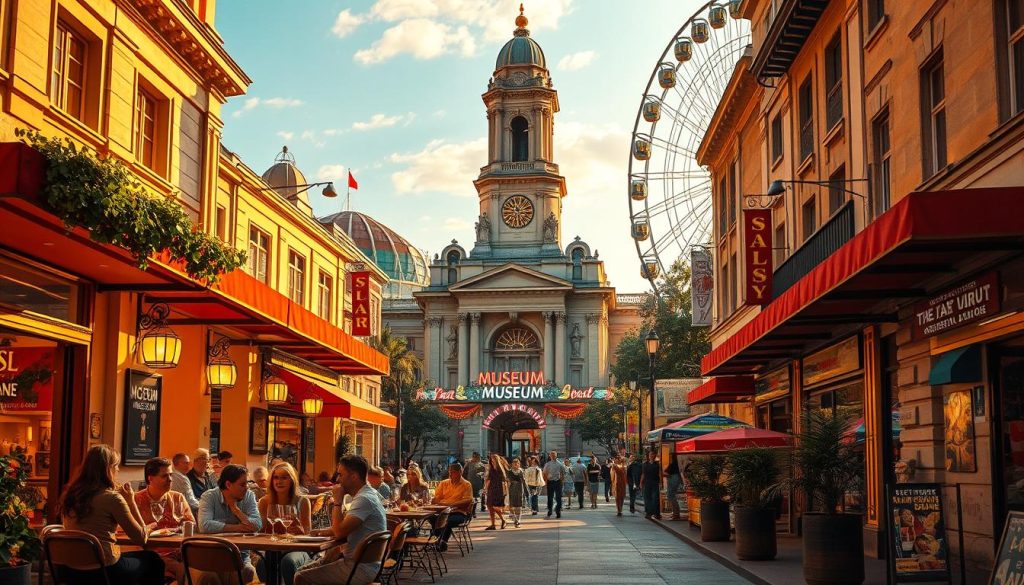
Legal Considerations for Partnerships
Before we start forming partnerships with local restaurants and attractions, we need to understand the legal side. It’s key to know the legal aspects that can affect our agreements. We must create clear contracts that show what each party will do.
Having a solid agreement helps us work together smoothly and avoids disagreements. It’s also important to think about who is responsible if something goes wrong. Getting advice from legal experts in Poland can help us follow the law.
We also need to make sure we follow all the rules and regulations. This means sticking to local business laws and health and safety rules. By focusing on these legal points, we can build strong partnerships that last.
Building a Brand through Partnerships
Building a strong brand in Poland’s competitive market is easier with partnerships. Working with local restaurants and attractions creates unique experiences. These experiences connect with our target audience. By looking at successful partnerships, we learn how to build a brand and the benefits they bring.
Examples of Successful Collaborations
Let’s look at some examples of partnerships that have made a big difference:
- Wawel Castle and Local Dining Establishments: This partnership attracts visitors interested in Polish history and local food. Together, they promote each other, increasing visits to both places.
- Zakopane Ski Resorts and Nearby Restaurants: Package deals that include dining and skiing have boosted the experience. This shows off the region’s beauty and promotes both brands.
- City Tours and Local Art Galleries: Tours and galleries working together have raised cultural appreciation. Adding local art to tours has made customers happier and more loyal.
These examples show how partnerships are key for brand building. They help us use each other’s strengths and attract more customers. By teaming up, local businesses create unforgettable experiences. These experiences make them more appealing and successful in Poland’s lively market.
Partnerships with Local Restaurants and Attractions: A Case Study
In Poland, a local restaurant teamed up with a famous tourist spot. This partnership made visiting better for everyone. The restaurant, known for its Polish dishes, worked with a historical site. Together, they drew in both locals and tourists.
At first, they faced some hurdles. They had different ways of doing things and talking. But, by meeting often, they got their goals straight. They created special deals that mixed meals with tours, making things more fun for guests.
Thanks to this partnership, both places saw more people coming in. The restaurant got 30% more visitors because of it. This shows how good partnerships can help everyone in the community.
| Partnership Aspect | Restaurant Outcomes | Attraction Outcomes |
|---|---|---|
| Customer Satisfaction | Increased positive reviews by 40% | Boosted visitor retention by 25% |
| Footfall Increase | 30% rise in patrons | 20% more ticket sales |
| New Promotion Initiatives | Launched two collaborative menu options | Introduced combined ticket packages |
| Social Media Engagement | 300% increase in interactions | 400% growth in follower count |
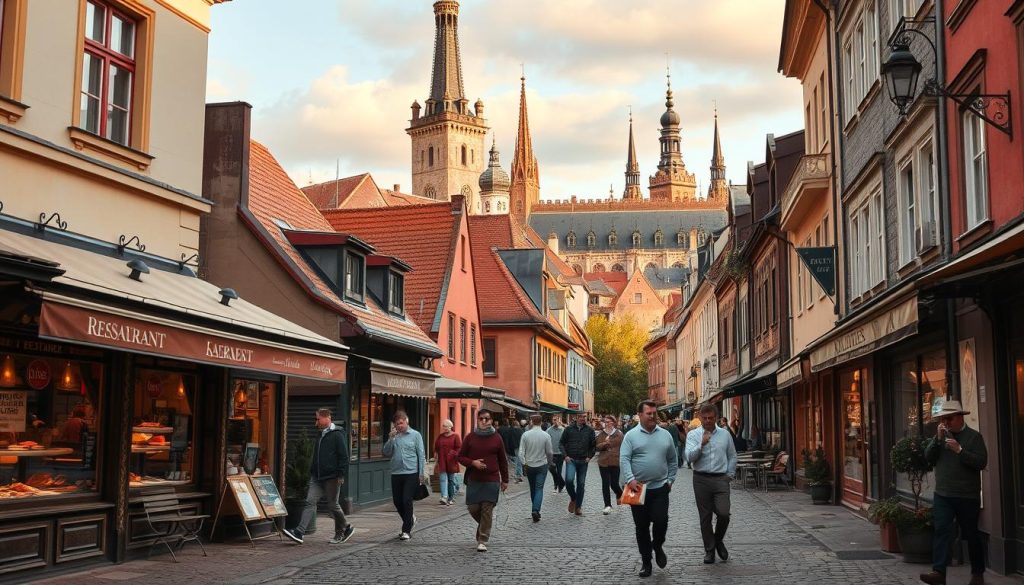
Leveraging Social Media for Promotion
Social media marketing is key in today’s digital world. It helps us boost our promotions and build a strong online presence. Using platforms like Instagram and Facebook, we can reach more people, engage with customers, and make our brand more visible.
Creating strategic posts is important for connecting with our audience. High-quality images and interesting stories can grab attention and spark conversations. Working with influencers in our field can also expand our reach, as their followers are keen to try new things.
Encouraging customers to share their experiences with us creates a sense of community. This leads to genuine reviews and testimonials that show how happy people are with our products or services. Sharing this content proves our dedication to customer satisfaction and boosts our online reputation.
To get the most out of social media, we need to monitor how our promotions are doing. By looking at engagement and responses, we can improve our strategies. This ensures our efforts connect well with our audience and help us grow.
Networking with Local Influencers and Bloggers
Networking with local influencers and bloggers is a great way to grow our partnerships. It helps us reach more people in the community. These individuals have a strong following and are trusted for their advice.
To start networking well, we should follow these steps:
- Find influencers and bloggers who share our values and target audience.
- Go to local events to meet people and talk about working together.
- Use social media to reach out and show our interest in their work.
Once we’ve made contact, it’s important to keep in touch. Regular chats help us find ways to work together. This could be through sponsored posts, guest blogs, or events. By teaming up, we get fresh ideas and reach more people.
Tracking the Success of Partnerships
It’s vital to track how well partnerships with local restaurants and attractions are doing. We must set clear goals to measure our success and what we can improve. This helps us understand how well our partnerships are working.
Key Performance Indicators
Monitoring partnerships involves looking at several important metrics. Here are some key ones:
- Customer footfall: We track the number of visitors brought in by our partnerships.
- Revenue growth: We check if sales have gone up thanks to our joint marketing.
- Customer feedback: We listen to what customers say about their experiences with our partners.
Using tools like surveys and data analysis software helps us turn this data into useful insights. By regularly checking these metrics, we can make our strategies better. This keeps our focus on making our partnerships successful.
![]()
Challenges in Forming Partnerships
When we try to work with local restaurants and attractions, we face many challenges. These come from cultural differences, different expectations, and talking problems. Knowing these issues is the first step to forming good partnerships.
Overcoming Cultural Barriers
Cultural differences can cause misunderstandings and problems. Different ways of doing business, making decisions, and negotiating can be big hurdles. To tackle these, we can try a few things:
- Have cultural training to learn about our partners’ customs and norms.
- Make sure we talk openly, so everyone can share their thoughts and needs.
- Use local knowledge to help understand each other better, making our partnership stronger.
By doing these things, we can deal with cultural barriers. This makes our work together easier and more successful. Embracing diversity makes our partnerships better and helps us work together better.
Leveraging Technology for Partnership Success
In today’s digital world, using technology is key to partnership success. SEO and website design help us get noticed and improve how users experience our sites. We’ll look at how these tools help us work well with local restaurants and attractions.
Using SEO for Visibility
SEO is a big part of our online plan. It helps more people find our websites. By using the right keywords, we climb up search rankings. This makes it easier for people to find us.
Local SEO is also important. It helps us reach those looking for places to eat and things to do in our area. Here are some tips:
- Find out what keywords people use.
- Make our titles and descriptions catchy.
- Use local listings and Google My Business to be seen more.
Website Design and User Experience
A good website design is all about making things easy for users. It helps us succeed online by letting visitors find what they need quickly. When we design our site, we should think about:
| Design Element | Best Practice |
|---|---|
| Navigation | Keep menus simple and links easy to find. |
| Loading Speed | Make images smaller and use fast hosting. |
| Mobile Responsiveness | Make sure it looks good on phones and tablets. |
| Content Quality | Make content interesting and useful. |
By focusing on these, we not only succeed online but also attract more customers. This helps our partnerships grow. SEO and website design are the foundation for strong relationships with local businesses.
Long-term Strategies for Sustaining Partnerships
To keep partnerships strong, we need to talk regularly with our local partners. This helps us understand their needs and what they expect. It also lets us quickly respond to any changes in the market or what customers want.
Being open and working together makes our partnerships better for everyone. It keeps them strong and beneficial for all involved.
Keeping up with market trends is key. We must watch industry changes and what people like to buy. This way, we can change our offers to fit what’s new and what people want.
Being flexible and creative helps our partnerships grow. It keeps them relevant and interesting to our audience.
Checking how our partnerships are doing is important too. We set goals and check them often. This helps us see what’s working and what needs to get better.
By doing this, we can build strong, lasting relationships. These relationships help us both grow and succeed together.

